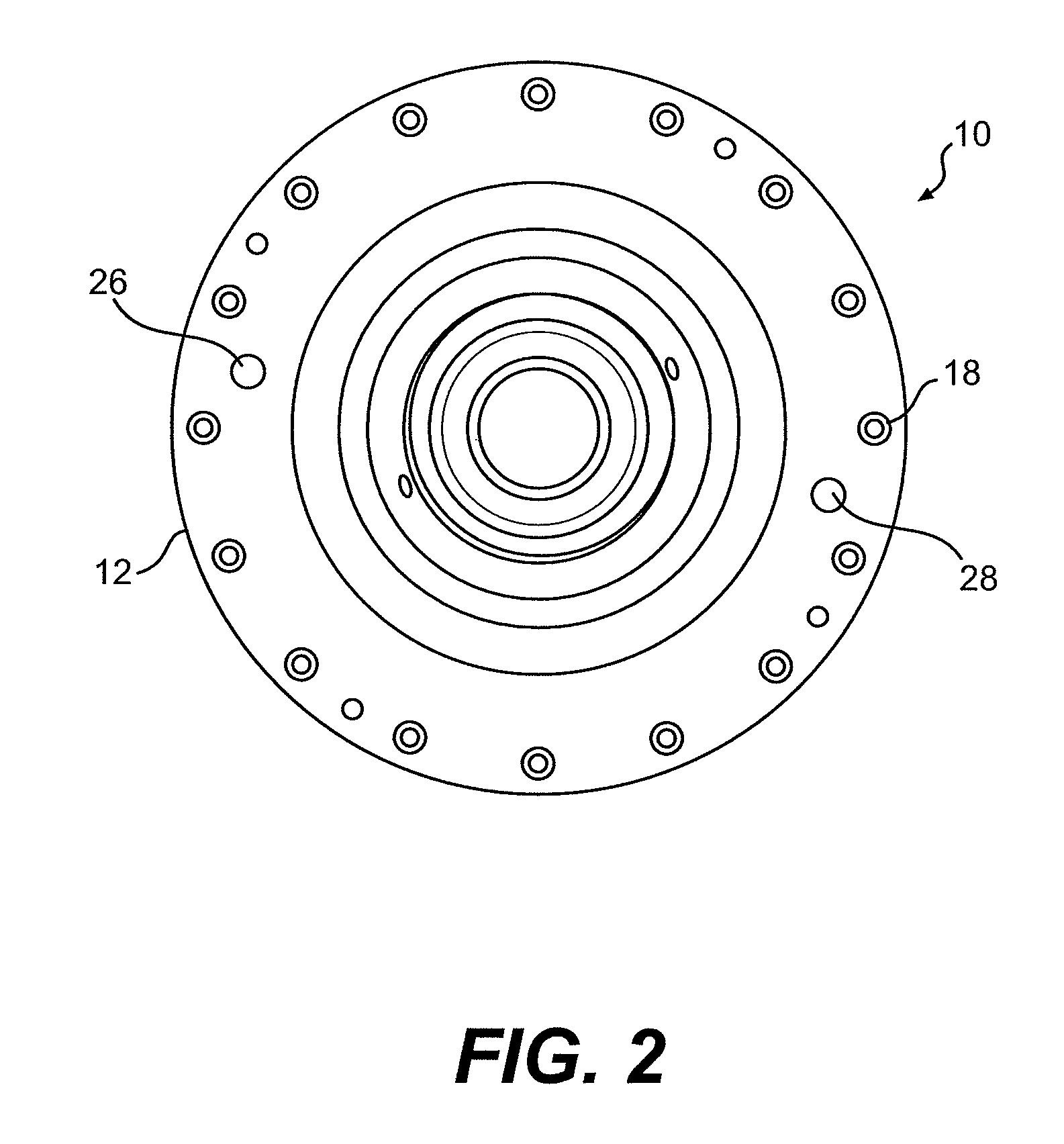Atomizer monitoring system
a technology for monitoring systems and atomizers, applied in lighting and heating apparatus, instruments, furniture, etc., can solve the problems of affecting the quality of atomizers, so as to avoid the surprise failure of parts within an atomizer and/or the associated costly downtim
- Summary
- Abstract
- Description
- Claims
- Application Information
AI Technical Summary
Benefits of technology
Problems solved by technology
Method used
Image
Examples
Embodiment Construction
[0029]Referring now in detail to the various figures of the drawings wherein like reference characters refer to like parts, there is shown in FIG. 1 a prospective view of an atomizer wheel 10 having a lid 12, a case 14 and a drive plate 16. The lid 12 and case 14 are attached via threaded head cap screws 18 that are inserted into the lid and threadingly engage the case. Typically the atomizer wheel 10 includes a plurality of wear inserts 20 positioned within ejection orifices located on the circumference of the sidewall of the case 14. While not being limited to a particular theory, during operation the atomizer wheel 10 rotates at very high speeds and multiple atomizer wheels may be located within a processing or treatment chamber where flue gases are subjected to desulfurization treatment within a flue gas desulfurization system of a coal fired power plant or incinerator. The atomizer wheel 10 preferably also includes, wear rings, wear nuts, lids, cases, lower drive plates, o-ring...
PUM
| Property | Measurement | Unit |
|---|---|---|
| diameter | aaaaa | aaaaa |
| time | aaaaa | aaaaa |
| time | aaaaa | aaaaa |
Abstract
Description
Claims
Application Information
 Login to View More
Login to View More - R&D
- Intellectual Property
- Life Sciences
- Materials
- Tech Scout
- Unparalleled Data Quality
- Higher Quality Content
- 60% Fewer Hallucinations
Browse by: Latest US Patents, China's latest patents, Technical Efficacy Thesaurus, Application Domain, Technology Topic, Popular Technical Reports.
© 2025 PatSnap. All rights reserved.Legal|Privacy policy|Modern Slavery Act Transparency Statement|Sitemap|About US| Contact US: help@patsnap.com



